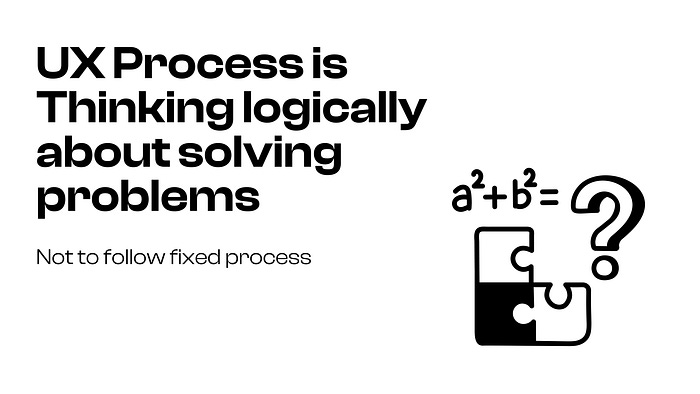UX made simple: solve user problems like a pro (Without the Jargon)
The world of UX design can seem intimidating, especially when faced with complex frameworks and processes. But fear not! At its core, the UX process is simply about using logical thinking to solve user problems. As a UX designer, whether you’re a seasoned professional or just starting out, your ultimate goal is to make things easier and more enjoyable for users. The good news is that there’s no one-size-fits-all approach to achieving this goal.
When people ask about the UX process, they often refer to popular frameworks like Design Thinking, Double Diamond, or Lean UX. However, it’s important to remember that you don’t need to apply every aspect of these frameworks to your own process.
As a UX designer, you are a problem solver. Your job is to make things easier for users by solving their problems. You are not a slave to the process. Don’t follow a process just because it’s called a “process” or because large companies use it.
Large companies have their own processes based on their experience and the need to unify their approach for large teams and complex products. These processes may not be applicable to you as an individual or a small team.
This article will guide you through the key principles of creating your own flexible and effective UX process.
Here are some key points to remember about the UX process:
It’s not a linear process. It’s iterative, meaning you can and should revisit previous steps as you learn more about the problem and potential solutions.
It’s not a one-size-fits-all process. Tailor the process to the specific problem you’re trying to solve and the resources you have available.
It’s not about following a set of rules. It’s about thinking critically and creatively about how to best solve a problem for users.
Here are some tips for creating your own UX process:
1. Start by understanding the problem you’re trying to solve
Before diving into any process, it’s crucial to clearly define the problem you’re trying to solve. What are your users’ needs and pain points? What are you hoping to achieve with your design? By asking these questions upfront, you’ll lay a solid foundation for the rest of your UX journey.
2. Tailoring Your Process.
Remember, there’s no magic formula for the “perfect” UX process. Instead of blindly following rigid frameworks, adapt and tailor your approach based on the specific problem you’re tackling. Consider factors like project size, available resources, and individual strengths and preferences. Don’t be afraid to get creative and experiment as you go!
Key Principles
Here are some core principles to keep in mind when crafting your UX process:
Iterative and Flexible: Remember, the process is not linear. Be prepared to revisit and refine your ideas as you learn new information and gather feedback.
User-centric: Always keep the user at the heart of everything you do. Conduct research, prototype solutions, and test your designs—all with the user’s needs and perspective in mind.
Focus on problem-solving: Don’t get bogged down in unnecessary steps. Remember, your primary goal is to find the best solution for the user, not simply follow a predetermined process.

Putting it into practice:
While there’s no single “correct” process, here’s a simplified example to illustrate how you might approach a UX challenge:
Empathize with users: Conduct research (interviews, surveys, etc.) to understand their needs, frustrations, and behaviors.
Define the problem: Clearly articulate the specific user problem you’re addressing.
Ideate and brainstorm: Generate a variety of potential solutions without judgment.
Prototype and test: Develop low-fidelity prototypes and gather feedback from users early and often.
Iterate and refine: Based on feedback, improve your solution until it effectively solves the user’s problem.
I hope this enhanced version is more connected and useful to your readers! Feel free to further customize it with specific examples, personal experiences, or additional resources to make it even more engaging and informative.
Originally posted at medium by Sayed Elmarakpy






